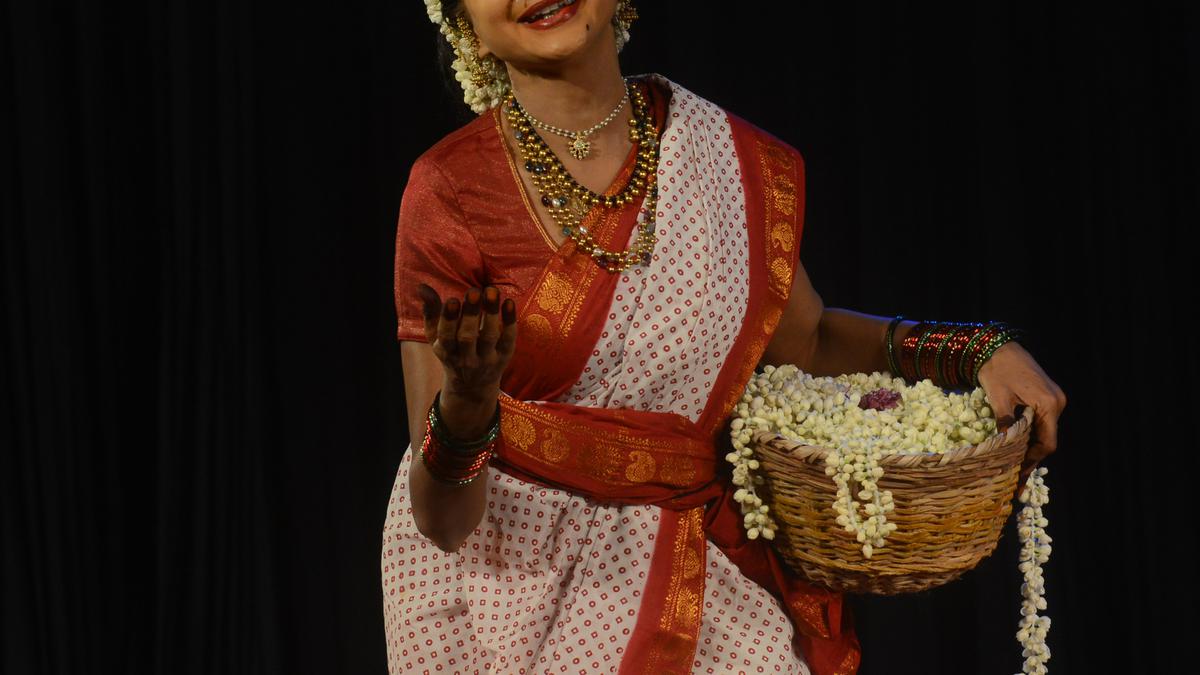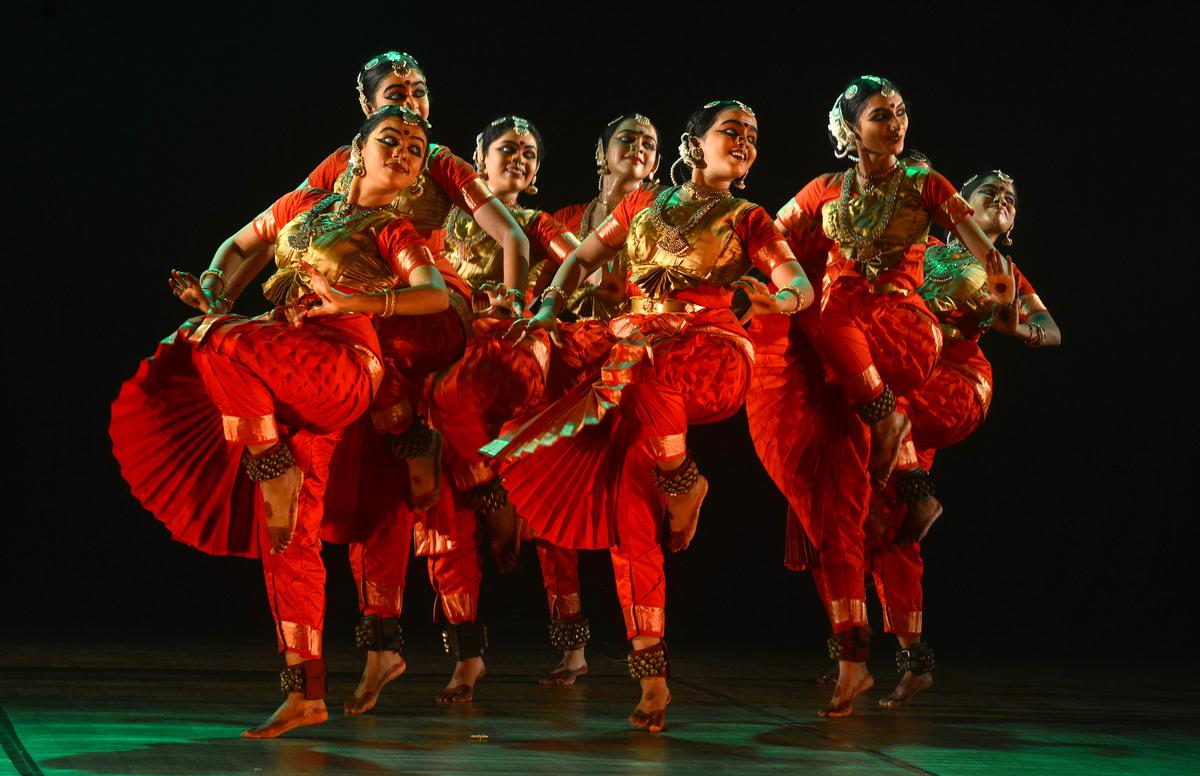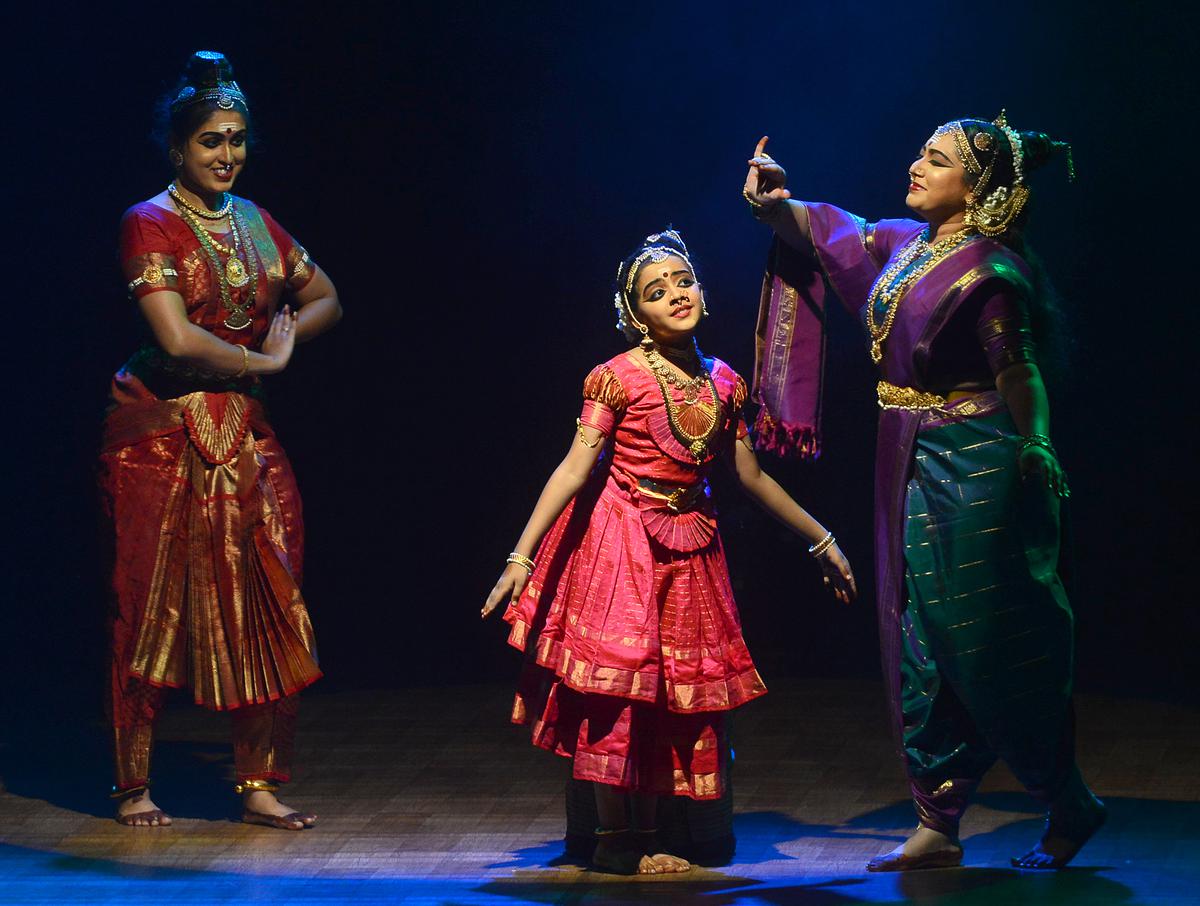- January 10, 2024
Urmila Satyanarayanan’s Thadathagai takes audience on a trip Madurai

Clad in Sungudi sari, Urmila Satyanarayanan played the role of Chokki, the narrator, in her thematic production ‘Thadathagai – The queen of Madurai’ that was premiered at the Narada Gana Sabha on December 16, 2023.
| Photo Credit: SRINATH M
The story of Meenakshi and Sundareswarar has inspired many dance productions over the years, the most recent is Natya Sankalpa’s Thadathagai – The eternal queen of Madurai.
Premiered at Narada Gana Sabha’s annual dance festival, it is choreographed by Urmila Satyanarayanan and Sai Kripa Prasanna. The lyrics are sourced primarily from the Thiruvilaiyadal Puranam of Patanjali Munivar by Desa Mangayarkarasi and her student Aravind Kumar. The music was by violinist Embar Kannan and audio by Resound India.
‘Thadathagai’ is a straightforward presentation of the story in the Bharatnatyam idiom. Choreography and music are the two aspects that keep the interest alive in this lengthy production.
One wonders about the story’s relevance today. Also, the visual language didn’t seem to have anything new to offer.

The high-energy nritta segment by a group of girls in flaming red and gold costumes during the premiering of Urmila Satyanaryanan’s ‘Thadathagai – The queen of Madurai’ at Narada Gana Sabha on December 16, 2023.
| Photo Credit:
SRINATH M
The high-energy nritta segment by a group of girls in flaming red and gold costumes, which comes as a prelude to the story, sets the pace for the next two hours. The emergence of Meenakshi from the sacred fire where king Malayadhwaja Pandya and queen Kanchanamala pray for a progeny, her initiation into the varied scriptures, artforms and martial arts, her ascendence to the throne, her expedition to Kailasa, meeting Shiva and their wedding formed the storyline.
The sequences flow from one to another with finesse, but what is interesting is the manner in which the group formations are used as a focal point or counterpoint, in each sequence. The excellence with which the dancers showcase varied expressions, movements and formations reveals the effort.

A sequence from Urmila Satyanarayanan’s ‘Thadathagai – The queen of Madurai’ that shows young meenakshi, who emerges from the sacred fire where king Malayadhwaja Pandya and queen Kanchanamala pray for progeny. The dance production was premiered at Narada Gana Sabha on December 16, 2023.
| Photo Credit:
SRINATH M
The central character of Meenakshi, personifying a combination of intellect and power, valour and grace, is of significance and M. Divya Lakshmi was a fine choice. She sails through the role with ease, bringing out myriad facets with conviction.
Being an instrumentalist, Kannan’s musical score predominantly includes sounds of varied instruments such as morsing, kanjira and thavil. The martial arts training sequence (choreography by Thiruchelwam) is impressive. Similarly, when Meenakshi marches with her army, the soundscape is seamlessly woven into the choreography, leaving a lasting impact.
Urmila, clad in a Sungudi sari and holding a basket of mallipoo (Madurai is known for the fabric and flower) in her hands, plays the role of Chokki, the narrator, with aplomb, while the many talented dancers of her school navigate well the dynamic visualisation.
The costumes and colour palette are well put-together. Make-up by Bhoopathy and Albert, and the lighting design by Venkatesh Krishnan are noteworthy.




